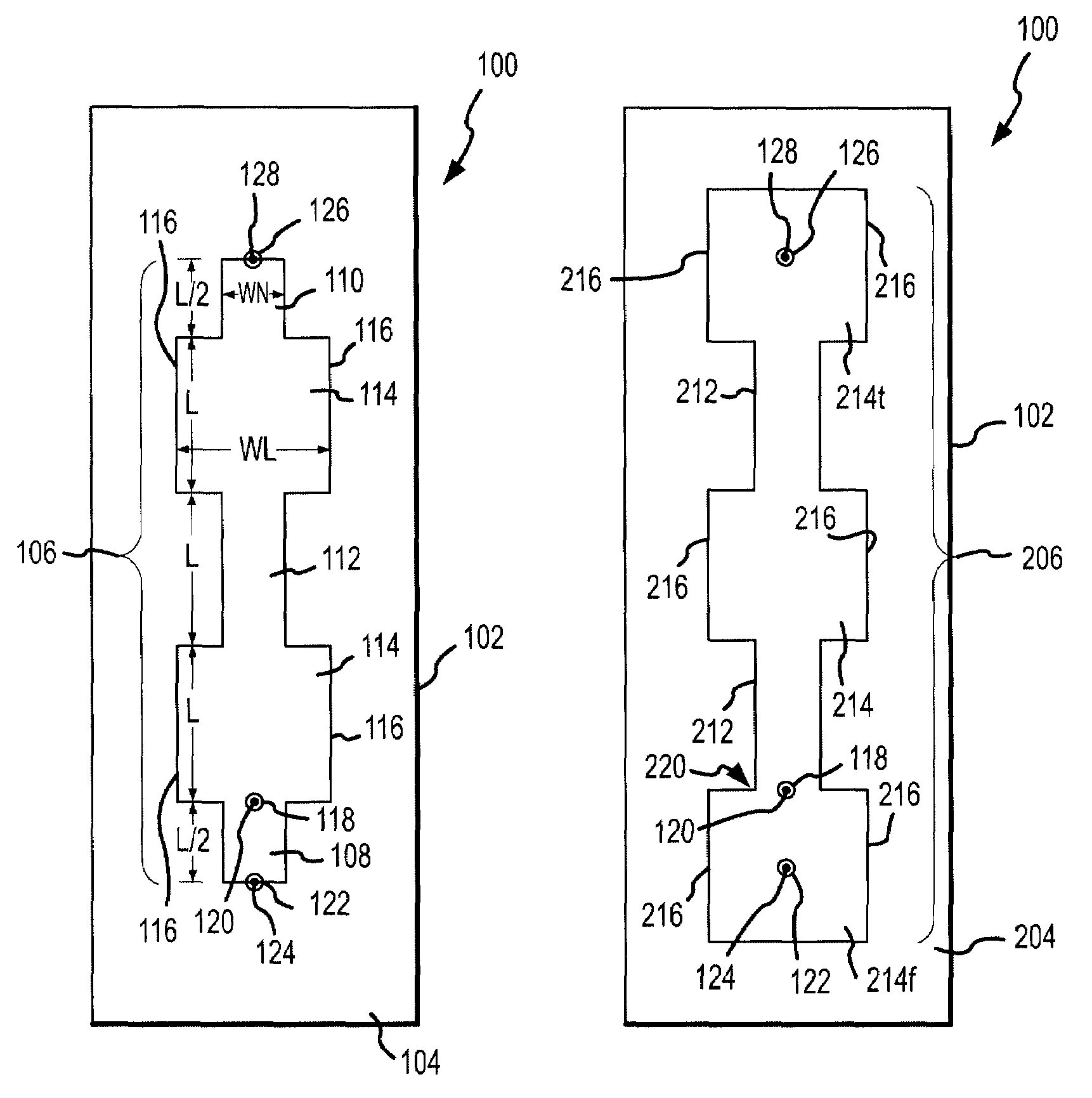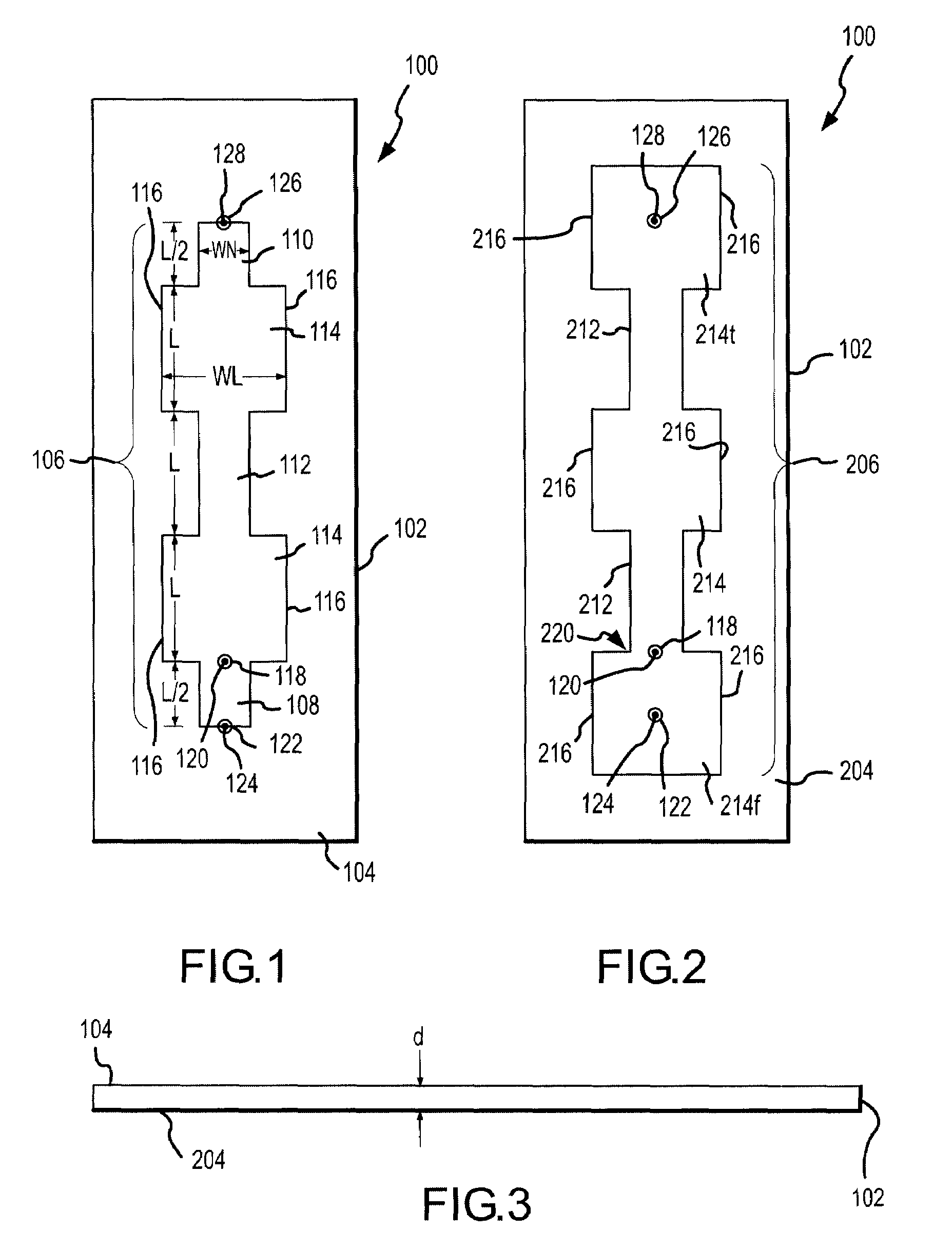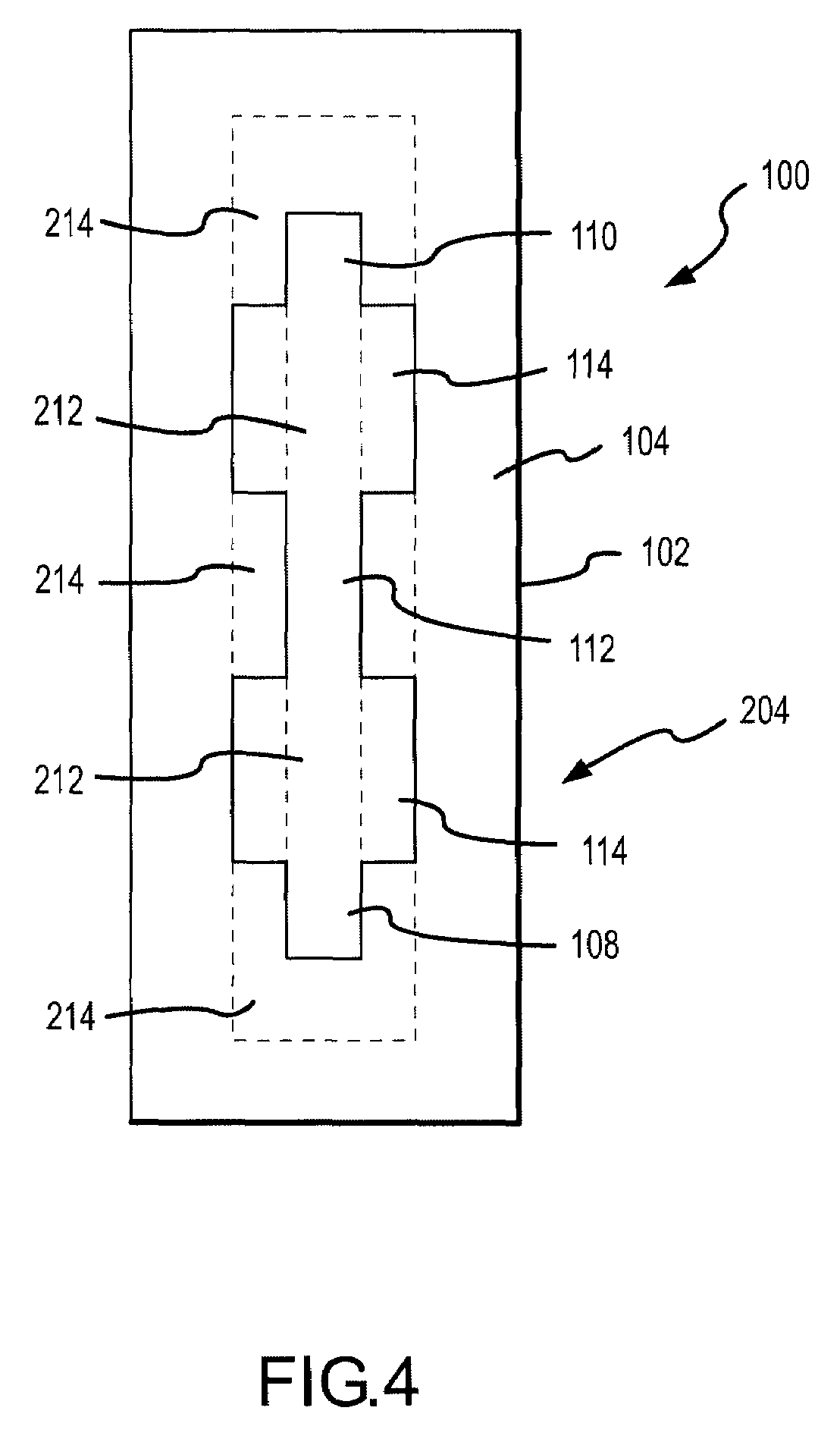Antenna arrays and methods of making the same
a technology of antenna arrays and antenna arrays, applied in the field of antenna arrays, can solve the problems of complex power feed network, difficult to achieve phase and amplitude correct to get maximum gain on azimuth, and complex power feed network associated with antenna arrays
- Summary
- Abstract
- Description
- Claims
- Application Information
AI Technical Summary
Benefits of technology
Problems solved by technology
Method used
Image
Examples
Embodiment Construction
[0020]FIGS. 1 and 2 and the following paragraphs describe some embodiments of the present invention. Like reference characters are used wherever possible to identify like components or blocks to simplify the description of the various subcomponents described herein. More particularly, the present invention is described in relation to a co-linear coaxial antenna, however, one of ordinary skill in the art will understand other antenna arrays are possible without departing from the spirit and scope of the present invention.
[0021]Referring to FIGS. 1 and 2, an omni-directional linear array antenna 100 exemplary of the present invention is shown. FIG. 1 shows a top side plan view of antenna 100. FIG. 2 shows a bottom side plan view of antenna 100.
[0022]Referring first to FIG. 1, a substrate 102 is shown. While shown as having a generally rectangular shape, substrate 102 does not need to be rectangular, but could be other shapes as desired, such as a random shape, a square shape, a circul...
PUM
 Login to View More
Login to View More Abstract
Description
Claims
Application Information
 Login to View More
Login to View More - R&D
- Intellectual Property
- Life Sciences
- Materials
- Tech Scout
- Unparalleled Data Quality
- Higher Quality Content
- 60% Fewer Hallucinations
Browse by: Latest US Patents, China's latest patents, Technical Efficacy Thesaurus, Application Domain, Technology Topic, Popular Technical Reports.
© 2025 PatSnap. All rights reserved.Legal|Privacy policy|Modern Slavery Act Transparency Statement|Sitemap|About US| Contact US: help@patsnap.com



